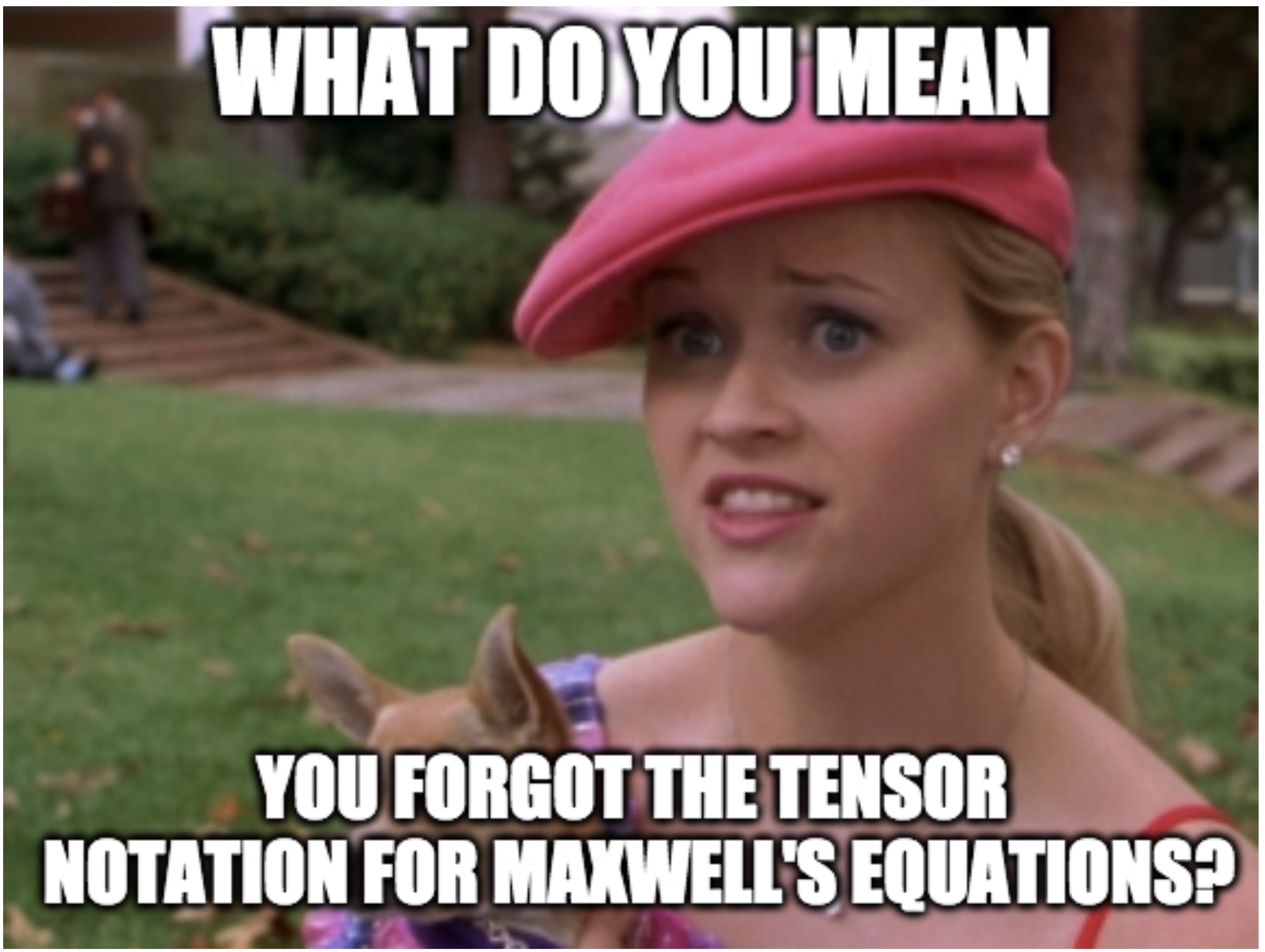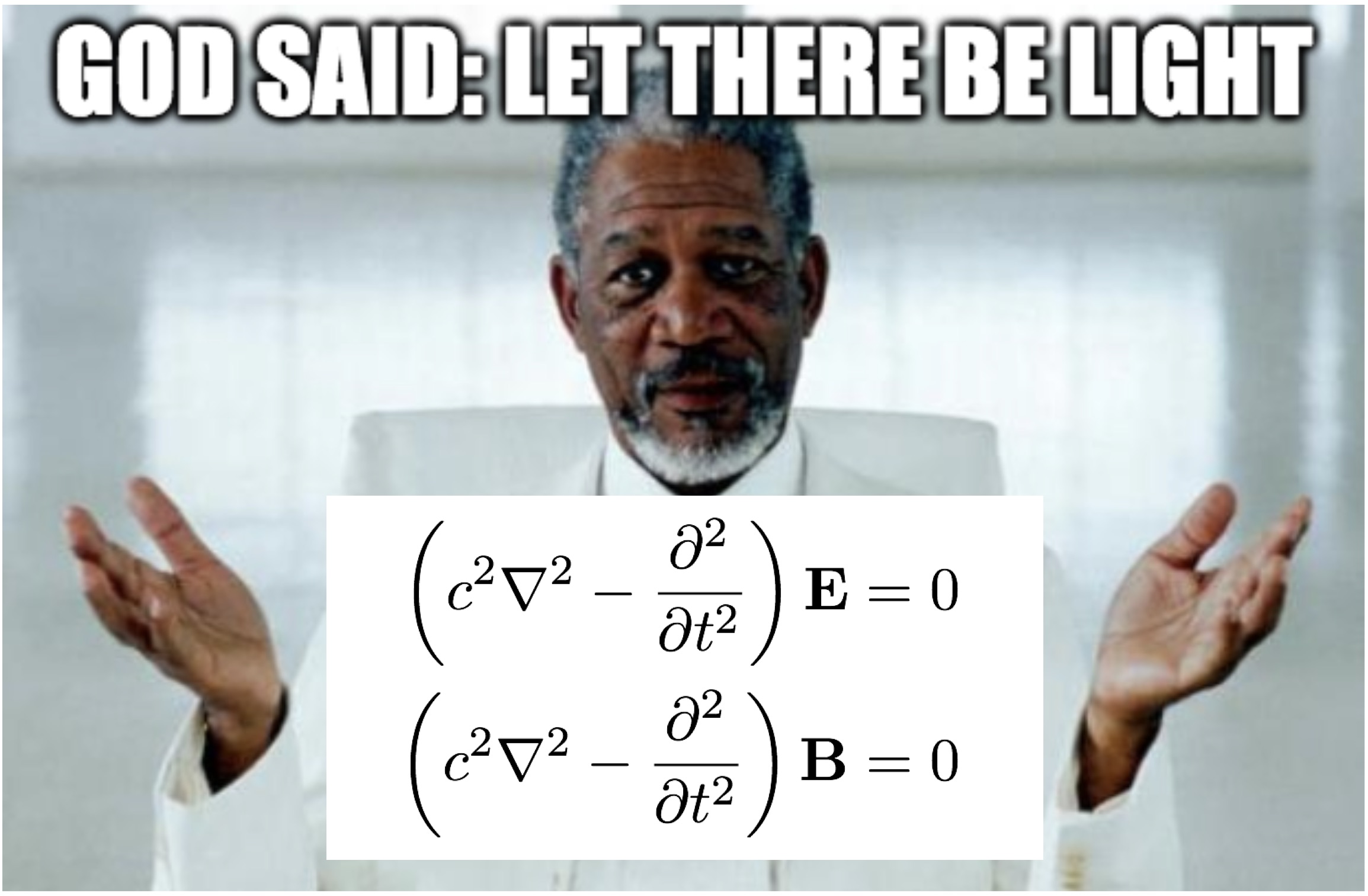
| Electromagnetic theory (AS.171.603)
(AKA Defense against the dark arts of quantum mechanics) Nadia Zakamska Fall 2019 |
| This is an old course webpage for information only, not a currently active course. Some materials have been removed in preparation for the next class. |
| Announcements |
| Course information |

1. Overview
This is a graduate course that covers relativistic particle dynamics, the fundamentals of classical field theory, radiation and propagation of electromagnetic waves, and Maxwell's equations in static and dynamic applications. Furthermore, we will discuss advanced topics in electrodynamics in medium and in plasmas and topics in current research. We will introduce analytical methods of EM theory (tensor calculus, PDEs and Green's functions and basis functions in several geometries, linear stability analysis) and occasionally use scientific computing and visualization software for numerical calculations. The goal of the class is to equip students with foundations and tools necessary to read scientific literature and to conduct research projects in graduate-level physics.
2. Lecture schedule
Instructor: Prof. Nadia Zakamska
Lectures: Mon and Fri, 1:30 - 2:45 pm (some exceptions possible), Bloomberg 464; office hours: by appointment.
TA / grader: Yuanyuan Xu
3. Homework and grading
(1) There will be roughly one homework every four lectures. You may discuss homework with your classmates or others. You may not look at their written solutions (and thus, you may not show yours to others). Discussion and study groups are strongly encouraged; however, direct copying of assignments will be considered a serious violation of the homework policy. Please report any violations to the instructor.
(2) You may use Internet, books, journals, and departmental resources and software. Google is an excellent place to start if there are terms and abbreviations you don't know. If you use a webpage or an article in your final solution, please provide a reference. If you use a direct quote, you must put it in quotation marks and provide a reference. Your own words are always preferable.
(3) Unless specified otherwise, there is no need to type your solutions, but we need to be able to read your handwriting.
(4) On the due date, homework must be submitted by the end of the lecture either to N. Zakamska or to Y. Xu (Yuanyuan's mailbox is OK).
(5) Everybody gets one free pass (per the entire semester) on one <=24 hour delay on an assignment. Aside from this, submissions late by 0-24 hours suffer a 50% penalty. Submissions late by 24 hours or more will suffer 100% penalty.
(6) No communication with other humans in any form will be allowed during the final exam. Final exam will be open book / open everything.
The final grade is 1/2 homework, 1/2 final exam. From past experience, it is likely that the passing grade is over 50%. Therefore, it is not possible to pass the class without submitting homework.
The strength of the university depends on academic and personal integrity. In this course, you must be honest and truthful. Ethical violations include cheating on exams, plagiarism, reuse of assignments, improper use of the Internet and electronic devices, unauthorized collaboration, alteration of graded assignments, forgery and falsification, lying, facilitating academic dishonesty, and unfair competition. The guidelines for this course are listed above. Report any violations you witness to the instructor. You may consult the associate dean of student conduct (or designee) by calling the Office of the Dean of Students at 410-516-8208 or via email at [email protected]. For more information, see the Homewood Student Affairs site on academic ethics.
4. Conventions
(1) A quick survey of the literature reveals that modern scientific convention (astrophysics, particle physics) is Greek indices for the 4D space-time and Latin indices for the 3D space.
(2) Since E and B transform into each other depending on the reference frame, "To measure E and B in different units is completely antithetical to the entire notion of relativistic invariance" (Melvin Schwartz). We will use the cgs system where E and B have the same units. We will discuss how to transform to other systems of units when necessary. In practice, as a PhD level physicist you need to know both systems of units, plus additional field-specific systems. For example, most undergraduate physics teaching (and of course all engineering-related teaching) is in MKS, most graduate teaching is in cgs or other field-specific units, and research papers use unit systems interchangeably depending on the conventions of the field.
(3) As a physicist, you may need to do order-of-magnitude estimates of various physical effects. To this end, you must carry around in your head some fundamental constants of nature. This is a list of constants that students will find useful to know. These values can and do come up during questioning at the research exams, the GBOs, the thesis defenses and in your professional presentations.
5. Textbooks
The first half of the semester is loosely based on Landau and Lifshitz volume 2 ("The classical theory of fields"). In terms of scope, we will cover chapters 1-9 and in roughly the same order. Unfortunately, their index notation is different from ours (Latin instead of Greek for 4D) and there are few, if any, pedagogically useful exercises, so these will be coming from elsewhere.
Another useful source which gives some of the same material, but in a more accessible vector form and with more detailed derivations, is A.S.Kompaneets ("Theoretical physics").
Textbook on Special Relativity by N. Zakamska, we will review material in Chapters 1-6 (undergraduate level) and introduce material in Chapters 7-8 (graduate level)
We will cover some material in Jackson for a few weeks.
We will also discss topics related to modern research and modern analysis tools.
| Assignments |

[Removed after the end of the semester.]
| Syllabus |

[References: LL -- Landau Lifshitz; NZ -- arXiv:1511.02121; JDJ -- Jackson; AK -- Kompaneets; BT -- Binney and Tremaine, Galactic Dynamics; Bl-Th -- Blandford and Thorne; these MIT lecture notes on plasma are pretty good, though use an odd notation; followed by the chapter number]
-- Relativistic kinematics and dynamics
Aug 28. Lecture 1. Einstein's principle of relativity. Derivation of the Lorentz transform in a variety of ways. Refresher on standard applications of the Lorentz transforms: time dilation, length contraction. [LL 1-4; NZ 1-3]
Aug 29. Lecture 2. Tensor calculus in 3D. Kronecker symbols and anti-symmetric symbols.
Sept 6. Lecture 3. Tensor calculus in 4D, contravariant and covariant 4-vectors. [LL 6; NZ 6.2]
Sept 9. Lecture 4. 4-vectors of velocity, acceleration, energy, momentum, charge density. [LL 5-7, 9; NZ 5-7; 4-vectors on Wikipedia]
Sept 13. Lecture 5. Dynamics of relativistic particles. Motion in constant EM fields. Tensor of electromagnetic fields. [LL 6; NZ 7-8]
-- Classical field theory
Sept 16. Lecture 6. Field transformations. Invariants of the field. Generalization of Lorentz transform for arbitrary velocity directions. [LL 23-25; NZ 8; JDJ 12]
Sept 20. Lecture 7. Review and problem solving. Aberration and Doppler effect [NZ 7]. Distribution functions [LL 10, 11 and Wikipedia page]
Sept 23. Lecture 8. 4-potentials. Gauge invariance. Maxwell's equations in covariant form. [AK 12; LL 18, 19, 26, 30, Wikipedia covariant formulation is a really nice summary, despite MKS and a different sign definition in the Maxwell 3D stress tensor from the one we used].
Sept 25. Lecture 9. 4-potentials: fields of moving charge [JDJ 12]. Energy / momentum flux of EM fields [LL 31]
Sept 27. Lecture 10. Stress-energy tensor [LL 31, 32, 33]. Lagrangian for particles [LL 16, 17, AK 21]
Sept 30. Lecture 11. Lagrangian for fields [AK 13], [LL 27, 32]
-- Static solutions of Maxwell's equations
Electrostatics and multipole expansion. Green's functions. [LL 40-42, JDJ 1.1-1.7, 4.1-4.2]
Oct 2. Lecture 12. Magnetostatics and multipole expansion. [LL 43-45, JDJ 5.7]
Oct 4. Lecture 13. Boundary value problems in electrostatics: Dirichlet condition, image charges, Cartesian coordinates. [JDJ 1.7, 1.9, 2.1, 2.5, 2.9-2.11]
Oct 7. Lecture 14. Cylindrical coordinates. [JDJ 3.7, 3.8, 3.11; Bessel in a coffee cup; Bessel on Wiki; BT on Bessel function solutions of Poisson equation, BT mathematical summary]
Oct 14. Lecture 15. Spherical coordinates. [JDJ 3.1-3.2, 3.5, 3.9; make CMB out of Y_lm; Spherical multipole moments, nice summary of Legendre polynomials, BT multipole expansions, BT mathematical summary]
Oct 16. Lecture 16. Boundary value problems in magnetostatics [JDJ 5.3, 5.4, 5.6, 5.7, 5.9]; Motion in non-uniform magnetic fields, drift velocity [LL 21, 22 and problems in these sections; also plasma drift and magnetic mirrors]
Oct 28. Lecture 17. Class cancelled.
-- Generation and propagation of radiation
Nov 1. Lecture 18. Radiation in vacuum, polarization tensor. [LL 46-50, Stokes parameters from Kosowsky; Stokes parameters from Wikipedia]
Nov 4. Lecture 19. Generation of radiation by moving charges and currents. Delayed potentials. Green's function for radiation. [LL 62]
Nov 8. Lecture 20. Dipole radiation. Thomson scattering. [LL 67, 78]
Nov 11. Lecture 21. Rayleigh scattering, magnetic dipole emission, quadrupole emission. Emission of relativistic particles. [LL 71, 73, 74]
-- Propagation of EM waves in media
Nov 15. Lecture 22. Propagation of wave packets [Bl-Th 7.2]. Dispersion of cold plasmas [MIT 5.1-5.3], pulsars, fast radio bursts.
Nov 18. Lecture 23. Evanescent waves. Frequency cutoffs. Reflection of radio waves off ionosphere. Langmuir waves. Dispersion relation for conductors, reflection of evanescent waves. [MIT 5.1-5.3; JDJ 7, 8.1]
Nov 22. Lecture 24. Linear stability analysis. Fluid dynamics equations [LL volume 5 chapter 1 was distributed at the lecture]. Sound waves. MHD equations.
Nov 25, Nov 29 -- Thanksgiving break
Dec 2. Lecture 25. Guest lecture by Prof. Tchernyshyov.
"The XY ferromagnet – electrostatics in d=2 duality is covered in Kosterlitz's original paper [1] and in condensed matter textbooks [2]. The extension of this duality to d=2+1 is covered in our recent preprint [3]."
Simulation shown in class
[1] J. M. Kosterlitz, "The critical properties of the two-dimensional XY model";
[2] P. M. Chaikin and T. C. Lubensky, "Principles of Condensed Matter Physics," Ch. 9 (Cambridge University Press, 1995);
[3] D. Dasgupta, S. Zhang, I. Bah, and O. Tchernyshyov, "Quantum statistics of vortices from a dual theory of the XY ferromagnet"
Dec 6. Lecture 26. MHD waves [JDJ 7.7]. Kraemers-Kroenig relations [Landau Lifshitz vol VIII, section 82 and vol V, section 123; Armitage lecture notes; JDJ 7.5, 7.10; classic derivation from complex omega plane from Bohren and Huffman, "Absorption and scattering of light by small particles". Yes, there is a whole 530 page book on that!]
Here are some other topics I would like to cover, but didn't this time:
Optics: geometric limit vs wave optics, and near-field vs far-field wave optics, geometric catastrophes and caustics
Waveguides
Cherenkov radiation
| Miscellaneous |

CGS vs MKS (scroll down for a conversion table for electromagnetic units)
Curvilinear systems (scroll down to the grey tables which are the most useful), or a better presentation of the same material is in Appendices A and B of Binney and Tremaine "Galactic Dynamics" -- small section posted in accordance with Fair Use Rules
Latex template, style file and instructions
Garland -- Advice for beginning physics speakers